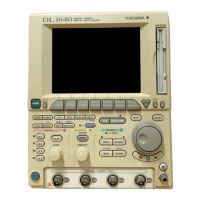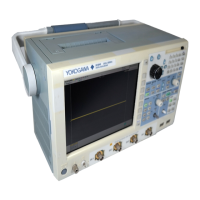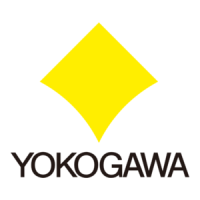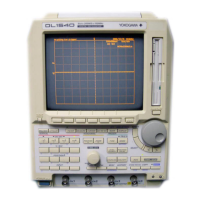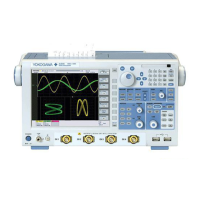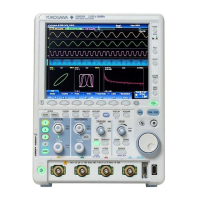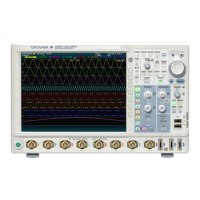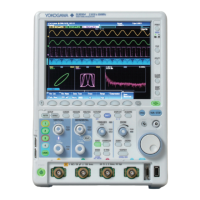2-17
IM 701450-01E
2
Explanation of Functions
Sequential Store <For the setup procedure, see section 7.6>
This function stores waveform data in the acquisition memory the specified number of
times and displays the data when in realtime sampling mode. The operation stops when
acquisition is finished. This function operates when the trigger mode is set to Single (N).
The maximum number of waveform acquisitions of sequential store varies from 1 to 4096
depending on the specified record length, interleave mode, and model. Once the
specified number of waveforms have been stored, you can display any of the waveforms
individually or all of them together. This function is useful when capturing the changes in
the waveform over time. Waveforms are not displayed while waveform acquisition is in
progress. The figure below shows an example when data is sequentially stored 100
times.
• Display all waveforms
(when all display is
executed)
• Display the newest
waveform (when
Select Record = 0)
• Display the oldest
waveform (when Select
Record = –99)
Display example when the acquisition count is 100
History Memory <For the setup procedure, see section 10.1>
When waveforms are being measured, the waveform data stored in the acquisition
memory as a result of a trigger being activated is displayed as waveforms on the DL7400
screen. When triggers are continuously activated and waveforms are acquired, it is
impossible to stop the measurement in time when an abnormal waveform appears
(newer waveforms appear on the screen). Normally, abnormal waveforms in the past
cannot be displayed. However, by using the history memory function, the past waveform
data (history waveforms including the current displayed waveform) stored in the
acquisition memory can be displayed when waveform acquisition is stopped. You can
display a specified history waveform from the data (up to 4096 waveforms or the number
of triggers) stored in the acquisition memory. In addition, a certain history waveform can
be searched (see section 2.6). The number of waveforms N that can be acquired and
held as history waveforms varies from 1 to 4096 depending on the record length,
interleave mode setting, and model. If the number of waveforms N that can be acquired
and held is exceeded, the oldest history waveform is cleared. The waveform currently
displayed on the screen (newest waveform) is counted as the 1
st
waveform, and up to
N–1 waveforms in the past can be displayed. The following figure indicates an example
when N = 1024.
Holds waveform data of the last 1024 triggers
Select Record 0
Select Record –25
Current display waveform
(Select Record = 0)
Displays past waveforms
(set the Select Record
in the range of 0 to –1023)
2.4 Waveform Acquisition and Display Conditions
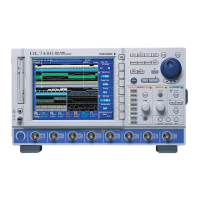
